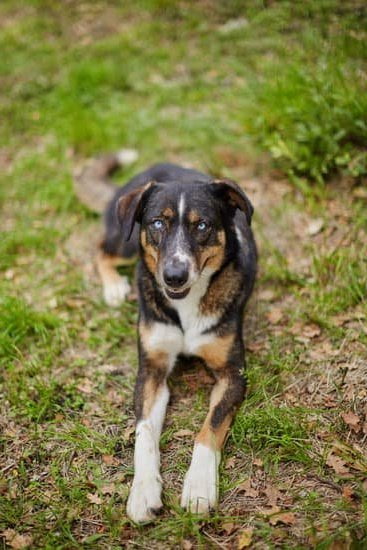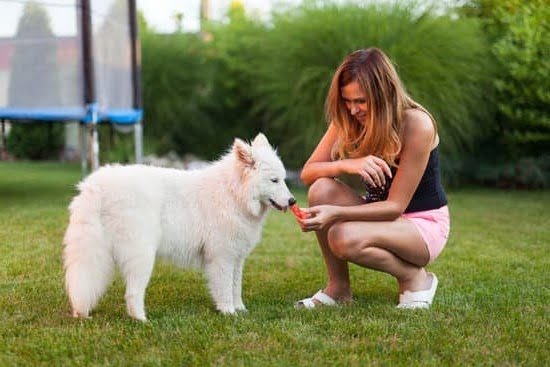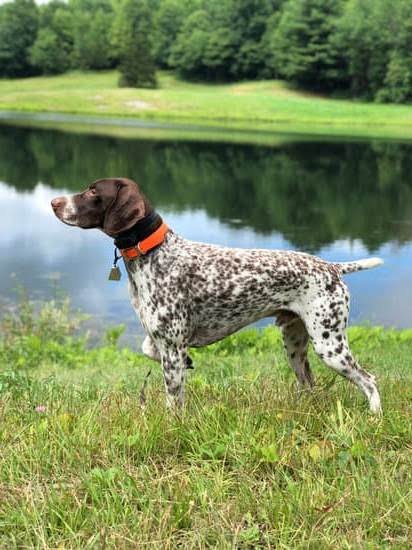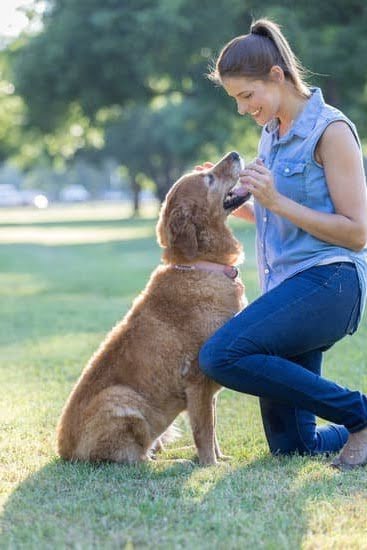Are you looking to explore a new outdoor activity with your furry companion? If so, learning how to train a dog to look for sheds can open up a whole new world of adventure for both you and your canine partner. Shed hunting with dogs not only provides physical exercise but also mental stimulation, bonding opportunities, and the thrill of uncovering hidden treasures in the wilderness.
Dogs have an innate sense of smell and hunting instincts that can be honed and utilized through training to become excellent shed hunters. By tapping into their natural abilities, you can create a rewarding experience for both you and your four-legged friend. Whether you’re a seasoned hunter or just looking for a fun outdoor hobby, shed hunting with dogs can offer a unique way to connect with nature and enjoy quality time with your pet.
In this guide, we will explore the benefits of shed hunting with dogs, delve into the natural instincts that make them ideal for this activity, discuss how to select the right breed for shed hunting, and provide pre-training tips to set you and your canine companion up for success. With the proper training techniques and dedication, you can transform your dog into an expert shed hunter, enhancing your outdoor adventures and creating lasting memories together.
Understanding the Natural Instincts of Dogs in Shed Hunting
Dogs have a natural instinct for hunting and retrieving, making them excellent companions for shed hunting. The process of training a dog to look for sheds builds upon their inherent skills and instincts. Understanding these natural tendencies can help in effectively training your furry friend to become a successful shed hunter.
The Scenting Abilities of Dogs
One of the key reasons why dogs are great at shed hunting is their exceptional sense of smell. Dogs have up to 300 million olfactory receptors in their noses, as compared to about 6 million in humans. This means that they can pick up scents that are undetectable to us. When training your dog to look for sheds, it’s important to harness this powerful scenting ability and teach them how to differentiate between different scents related to antlers.
Instinctive Retrieval Behavior
Many dog breeds have an innate desire to retrieve objects, such as sticks or balls. This behavior can be leveraged when teaching your dog to search for and retrieve shed antlers. By tapping into this natural instinct, you can encourage your dog’s enthusiasm for finding and bringing back the sheds they discover. Incorporating games like fetch during training sessions can make the learning process more engaging and enjoyable for your pet.
Tracking and Trailing Skills
Dogs also possess remarkable tracking abilities, which make them excellent at following trails left by animals. When looking for sheds, your dog will rely on its tracking skills to locate antlers that have been discarded by deer or other wildlife. By understanding how dogs naturally track scents and follow trails, you can enhance their training in shed hunting. Implementing exercises that simulate tracking scenarios will help develop and refine these crucial skills in your canine companion.
Selecting the Right Breed for Shed Hunting
When it comes to shed hunting, selecting the right breed of dog plays a crucial role in the success of your hunting endeavors. Different breeds have varying strengths and instincts that can aid in finding sheds more efficiently. Here are some key factors to consider when choosing a breed for shed hunting:
- Nose Power: Dogs with a strong sense of smell, such as hounds and retrievers, are ideal for shed hunting as they can easily detect the scent of antlers.
- Energy Levels: Opt for breeds that have high energy levels and stamina, such as German Shorthaired Pointers or Labrador Retrievers, as shed hunting can be physically demanding.
- Trainability: Look for breeds that are easy to train and eager to please, making it easier to teach them how to search for sheds effectively.
Keep in mind that every dog is unique, so it’s essential to consider individual characteristics and preferences when selecting a breed for shed hunting. Additionally, crossbreeds or mixed breeds can also excel in shed hunting with the right training and guidance.
Training Your Dog to Look for Sheds
Once you have selected the right breed for shed hunting, it’s time to start training your furry companion. Here are some basic tips on how to train a dog to look for sheds effectively:
- 1. Start by introducing your dog to the scent of antlers by using shed antler scent products or real sheds during training sessions in a controlled environment.
- 2. Teach your dog basic commands such as “search,” “fetch,” and “drop,” reinforcing positive behaviors with treats or praise.
- 3. Gradually increase the difficulty level by hiding sheds in different locations and environments, allowing your dog to practice searching for them using their natural instincts.
By following these training techniques and being patient with your dog, you can enhance their skills in shed hunting and enjoy this rewarding outdoor activity together. Remember to keep training sessions fun and engaging to maintain your dog’s interest and motivation throughout the process.
Pre-Training Preparation for Shed Hunting With Your Dog
When preparing to train your dog to look for sheds, it is important to start with the basics. One of the first steps in pre-training preparation is ensuring that your dog has a solid foundation of basic obedience commands.
Commands such as sit, stay, come, and heel are essential for effective shed hunting training. If your dog does not already have these commands down pat, it may be beneficial to work on obedience training before diving into shed hunting training.
Another crucial aspect of pre-training preparation is familiarizing your dog with the outdoors. Take your dog on regular walks or hikes in natural settings where sheds can typically be found. This will help acclimate them to the sights, sounds, and smells of the environment in which they will be searching for sheds. Additionally, allowing your dog to explore and become comfortable with various terrain types will better prepare them for the physical demands of shed hunting.
Lastly, it is important to establish a positive and rewarding relationship with your dog before beginning shed hunting training. Positive reinforcement techniques, such as using treats or toys as rewards for good behavior, can help motivate and engage your dog during training sessions. Building trust and a strong bond with your furry companion will make the training process more enjoyable for both you and your dog.
- Ensure basic obedience commands are mastered
- Expose your dog to outdoor environments
- Use positive reinforcement techniques for motivation
- Practice basic obedience commands
- Take regular walks/hikes in natural settings
Basic Training Techniques for Shed Hunting
Training a dog to look for sheds can be a rewarding experience for both you and your canine companion. The key to success lies in using effective training techniques that tap into your dog’s natural instincts and abilities.
One of the first steps in training your dog for shed hunting is to establish a strong foundation in basic obedience commands. This includes commands such as sit, stay, come, and heel, which are essential for maintaining control during shed hunting expeditions.
Once your dog has mastered basic obedience commands, you can start introducing them to the specific skills needed for shed hunting. One of the most important skills to teach your dog is how to use their sense of smell to search for sheds.
You can do this by hiding shed antlers in various locations and encouraging your dog to find them using verbal cues and positive reinforcement. Gradually increase the difficulty of the search tasks to help your dog develop their scenting abilities.
In addition to teaching your dog how to use their sense of smell effectively, it is also important to work on building their physical endurance and stamina. Shed hunting can be a physically demanding activity, requiring dogs to cover long distances over rough terrain. Consider incorporating regular exercise routines such as hiking, running, or agility training into your dog’s schedule to help them build the strength and endurance needed for successful shed hunting expeditions.
| Training Techniques | Benefits |
|---|---|
| Establish basic obedience commands | Ensures control during shed hunting |
| Teach scenting skills with positive reinforcement | Enhances ability to find sheds using sense of smell |
| Build physical endurance through exercise | Prepares dogs for covering long distances during shed hunts |
Advanced Training Methods to Enhance Your Dog’s Skills
Utilizing Scent Drills
To enhance your dog’s skills in shed hunting, incorporating scent drills into their training routine can be extremely beneficial. Scent drills help the dog develop their ability to detect the unique scent of shed antlers, making them more efficient in locating them during actual hunts.
Start by hiding shed antlers in various locations and encouraging your dog to find them using verbal cues and gestures. As your dog becomes more proficient, increase the difficulty of the drills by placing the sheds in harder-to-find spots or using multiple sheds at once.
Introducing Distractions
Another advanced training method to enhance your dog’s skills in shed hunting is to introduce distractions during training sessions. This will help simulate real-life hunting scenarios where there may be competing scents or noises that could potentially throw off your dog’s focus.
Gradually expose your dog to distractions such as other animals, unfamiliar scents, or loud noises while they are searching for shed antlers. This will help them learn to stay focused on the task at hand and improve their overall performance during hunts.
Implementing Obedience Training
Incorporating obedience training into your advanced shed hunting training regimen is essential for enhancing your dog’s skills. A well-behaved and obedient dog will be easier to control in the field and more likely to follow commands effectively during hunts.
Practice basic obedience commands such as sit, stay, come, and heel consistently during training sessions to reinforce good behavior and create a strong bond between you and your dog. This will not only improve their success in shed hunting but also ensure a safe and enjoyable experience for both you and your furry companion.
Tips for Troubleshooting Common Challenges During Training
One common challenge that dog owners may encounter when training their furry companions to look for sheds is distractions. Dogs are naturally curious and easily distracted by other scents, noises, or movements in the environment. To address this challenge, it is essential to start training in a quiet and familiar area before gradually introducing more distractions. Using high-value treats or toys can also help keep your dog focused on the task at hand.
Another common issue that may arise during shed hunting training is lack of motivation or interest from the dog. If your canine companion seems disinterested or unmotivated to search for sheds, try switching up the rewards you use during training sessions. Experiment with different types of treats, toys, or praise to find what truly motivates your dog. Additionally, varying the training routine and incorporating fun games can help keep your dog engaged and excited about shed hunting.
Additionally, some dogs may struggle with obedience or following commands consistently during shed hunting training. To tackle this challenge, it is crucial to maintain patience and consistency in your training approach. Break down the training process into smaller steps and practice regularly with positive reinforcement techniques.
Consistent practice and clear communication will help your dog understand what is expected of them during shed hunting excursions. With time and effort, even the most stubborn or disobedient dogs can learn how to train a dog to look for sheds successfully.
Incorporating Shed Hunting Into Your Outdoor Activities With Your Dog
Shed hunting can be a rewarding activity to enjoy with your furry companion, as it not only strengthens your bond but also provides mental and physical stimulation for your dog. Once you have successfully trained your dog to look for sheds, you can incorporate this skill into various outdoor activities.
One way to do this is by integrating shed hunting into your regular hikes or walks in the woods. This way, you can make the most out of your time outdoors while engaging your dog in an exciting treasure hunt.
Another way to include shed hunting into your outdoor activities with your dog is by organizing specific shed hunting trips. You can plan weekend outings dedicated solely to shed hunting, where you and your dog can explore new areas and put your training to the test. This allows for a more focused approach to shed hunting and gives both you and your dog a chance to practice and improve your skills together in different environments.
Additionally, participating in shed hunting competitions or events can be a fun way to challenge yourself and your dog while meeting other like-minded individuals. These events often provide a great opportunity for socialization, learning from other experienced shed hunters, and showcasing the hard work you have put into training your dog. Remember that the key to successful shed hunting with your dog lies in consistent practice, patience, and positive reinforcement throughout the training process.
| Benefits of Incorporating Shed Hunting | Tips for Successful Integration |
|---|---|
| Strengthens bond between owner and dog | Consistent practice is key |
| Provides mental and physical stimulation | Patience and positive reinforcement are essential |
| Engages dogs in an exciting treasure hunt | Joining shed hunting events for socialization |
Maintenance and Continued Practice for Optimal Shed Hunting Performance
In conclusion, training your dog to look for sheds can be a rewarding and exciting activity that strengthens the bond between you and your furry companion. By understanding your dog’s natural instincts and selecting the right breed for shed hunting, you can set a strong foundation for success. Pre-training preparation is key to ensure both you and your dog are ready for the challenges ahead.
Basic training techniques such as introducing scents and teaching commands will help get your dog started on the right track. As you progress, consider advanced training methods to enhance your dog’s skills and optimize their performance in shed hunting. Remember, consistency and patience are crucial when teaching your dog new skills.
To maintain optimal shed hunting performance, it is important to continue practicing with your dog regularly. Incorporate shed hunting into your outdoor activities to keep your dog engaged and motivated. Troubleshoot any common challenges that may arise during training sessions, and always celebrate small victories along the way. With dedication and perseverance, you can train your dog to be a skilled shed hunter and enjoy many successful hunts together in the great outdoors.
Frequently Asked Questions
How Do I Teach My Dog to Find a Shed?
Teaching your dog to find a shed involves patience, consistency, and positive reinforcement. Start by introducing them to the scent of shed antlers and rewarding them when they show interest. Gradually increase difficulty levels and practice regularly.
What Is the Best Dog to Train for Shed Hunting?
The best dog breeds for shed hunting are typically those with a strong sense of smell and high energy levels. Breeds like Labrador Retrievers, German Shorthaired Pointers, and Vizslas are popular choices due to their hunting instincts and trainability.
How Do You Train a Dog to Track a Deer Shed?
Training a dog to track a deer shed requires building on their natural tracking instincts. Start by introducing them to the scent of deer antlers and reward them when they successfully find one. Practice in various environments to improve their tracking skills.

Welcome to the blog! I am a professional dog trainer and have been working with dogs for many years. In this blog, I will be discussing various topics related to dog training, including tips, tricks, and advice. I hope you find this information helpful and informative. Thanks for reading!





